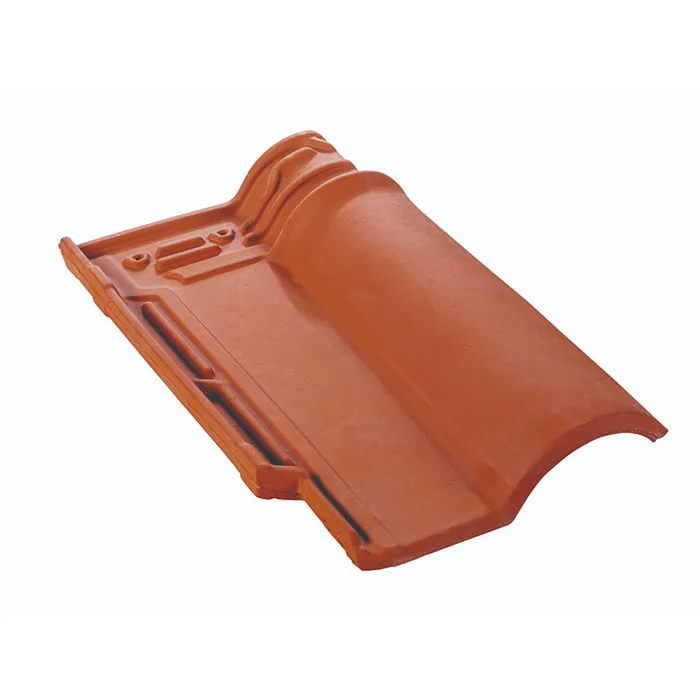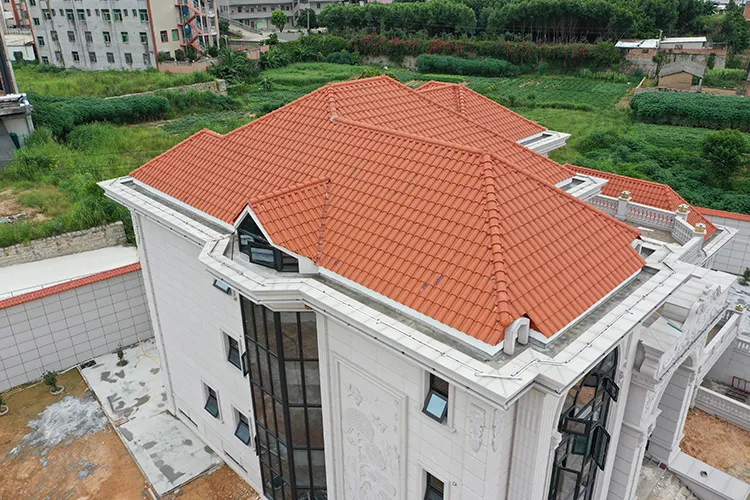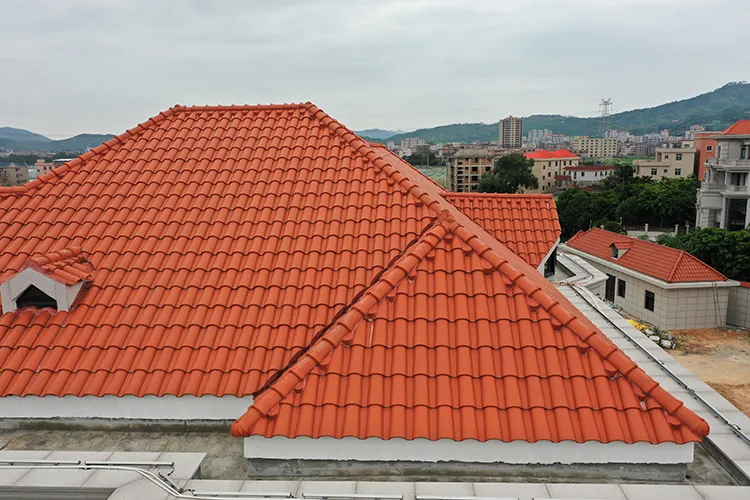Roman clay roof tiles are widely used around the world because of their classic curved shape and durability. Its name comes from the ancient Roman architectural style, reflecting an elegant and retro design concept. However, when this classic Western architectural element meets a Chinese-style house, can it be harmoniously integrated? Are Roman clay tiles suitable for Chinese-style buildings?
This article professionally interprets the characteristics of the architectural style, the functional characteristics of tiles, and the design compatibility, and explores the applicability of Roman clay roof tiles in Chinese-style buildings.

What are the characteristics of Chinese-style houses?
To explore whether Roman clay tiles are suitable for Chinese-style buildings, we first need to understand the architectural characteristics of Chinese style.
1. Roof forms of Chinese-style buildings
The roof of Chinese-style buildings is one of its iconic features, and common forms include:
● Xieshan roof: the eaves staggered up and down, showing a majestic momentum.
● Wudian roof: the four slopes and the top corners are raised, reflecting dignity and solemnity.
● Overhanging roof: The hanging structure with the eaves projecting outward is more light and agile.
2. Traditional use of roof tiles
Traditional Chinese buildings usually use small green tiles, tubular tiles, flat tiles, etc. These tiles emphasize:
● Functionality: waterproof, windproof, and durable.
● Aesthetics: Emphasis on the layering of patterns and tile arrangement.
● Culturality: Reflects traditional philosophical ideas, such as curves implying softness and balance.
3. Choice of color and material
The roof tiles of Chinese buildings are mostly gray, green or clay, which blends in with the overall architectural style and natural environment. The tile material is mainly clay, focusing on simplicity and natural beauty.

What are the characteristics of Roman clay roof tiles?
As a classic Western architectural element, the characteristics of Roman clay tiles are mainly reflected in functionality and design.
1. Appearance design of Roman tiles
Roman clay tiles are mainly single-wave or double-wave shapes, with smooth surface lines, presenting a unique curvaceous beauty. This design not only enhances the three-dimensional sense of the roof, but also enhances the close connection between tiles.
2. Material and performance
Roman tiles are made of high-quality clay fired at high temperature, and have the following characteristics:
● Durability: strong wind resistance, frost resistance and waterproof ability.
● Color stability: natural clay color is durable and not easy to fade.
● Environmental protection: clay tiles can be recycled and conform to the concept of sustainable development.
3. Functional advantages
● Drainage performance: The curved design of Roman tiles helps to drain water quickly and is suitable for rainy or humid areas.
● Thermal insulation performance: Clay tiles have good absorption and isolation effects on heat and are suitable for hot areas.
● Installation convenience: The design of the tiles makes it quick to install and adapt to a variety of roof slopes.
Compatibility analysis of Roman clay roof tiles and Chinese style
From architectural style to actual function, Roman clay tiles and Chinese architecture may be integrated in some aspects, but there are also design differences that need to be noted.
1. Coordination of exterior styles
● Commonalities: Roman clay tiles and Chinese tiles are both mainly curved, which makes the two visually compatible. In addition, the clay tone of Roman tiles is close to the color of tiles in traditional Chinese buildings, which can be well integrated into the Chinese style.
● Differences: Chinese architecture emphasizes warping and layering, while the single or double wave design of Roman tiles is relatively simple, lacking the complex texture and carvings of traditional Chinese tiles. In Chinese architecture that pays attention to details and cultural heritage, Roman tiles may appear too modern.
2. Adapt to Chinese roof structures
● Roof slope requirements: Chinese roofs are mostly designed with large slopes, while Roman tiles are adapted to a variety of slopes, which makes them flexible in installation.
● Eaves design: The eaves of Chinese roofs are usually warped, and the straight installation method of Roman tiles may not perfectly fit these complex structures.
3. Matching of functional performance
● Waterproof performance: The efficient drainage design of Roman clay tiles can adapt well to rainy environments, which coincides with the waterproof requirements of Chinese architecture.
● Weather resistance: Whether in the humid southern regions or the cold northern climates, the anti-freeze and wind resistance of Roman tiles can meet the needs, which is consistent with the actual application scenarios of Chinese architecture.
4. Fusion of cultural aesthetics
There are certain differences between the Western architectural culture represented by Roman tiles and the traditional culture of Chinese architecture. Although they are compatible in actual functions, how to reflect cultural integration in design is a topic worth exploring.

The possibility of using Roman clay tiles in Chinese architecture
Although the design style of Roman tiles originated from the West, it can also be effectively applied in Chinese architecture through appropriate adjustments.
1. Customized design
By adjusting the color and texture of Roman tiles, make them closer to the appearance of traditional Chinese tiles. For example:
Use blue-gray tones instead of traditional clay red.
Add simple Chinese patterns to enhance cultural adaptability.
2. Combining modern and traditional elements
In new Chinese-style buildings, Roman tiles can be used as a modern element, matched with traditional roof structures, showing a design aesthetic that combines the past and the present.
3. Specific application scenarios
Roman clay tiles are more suitable for modern improved buildings in Chinese style, or as auxiliary materials in the design of supporting buildings (such as garages and garden pavilions), rather than completely replacing traditional tiles.
Rongguan is synonymous with high-quality, affordable building materials. Our quartz stone, artificial marble, and clay roof tiles are available at competitive factory prices, with bulk purchasing options and personalized customer support for every project.

